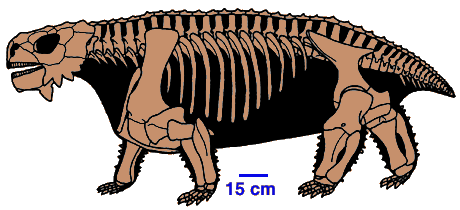

Pareiasaurs had multi-cusped teeth that vaguely resembled those of iguanas. This dentition and the large, deep body (which probably had an extensive digestive tract) of pareiasaurs suggests that they were herbivorous. Pareiasaurs include the largest terrestrial anapsids that ever lived, and their limbs exhibit graviportal (weight-bearing) specializations, such as a reduction in the phalangeal count (number of toe segments), and robust limbs with large areas for muscle attachments. All pareiasaurs had polygonal bony scales over at least part of their body. These scutes may have provided some protection and may have helped to stiffen their heavy body. It has even been suggested that these osteoderms coalesced in the subsequent evolution of the group and eventually gave rise to the shell of turtles, but this hypothesis is still controversial.
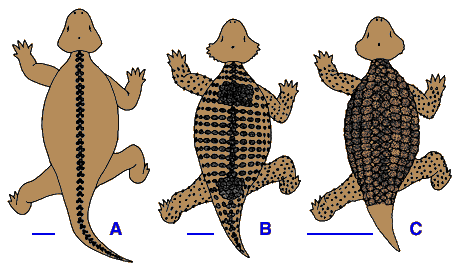
The absence of a deep quadrate emargination in pareiasaurs may be secondary (i.e. due to evolutionary loss rather than retaining an ancestral condition) because closely related anapsids (such as procolophonoids and millerettids) had an emargination. Recent reports of a slender stapes (a sound-conducting middle ear ossicle) suggest that pareiasaurs had a tympanum (ear drum) and could hear high frequency airborne sounds.
If you're interested in taking a closer look at the Pareiasauria, try our Pareiasaur Morphology page. If you would like to see large pictures of pareiasaur specimens, click on one of the small images below.
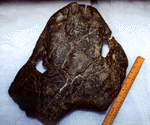
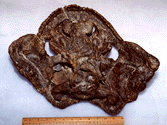
Palatal (roof of the mouth) view of a pareiasaur skull from the UCMP collections.
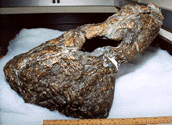
Lateral (side) view of a pareiasaur skull from the UCMP collections.

Lee, M. S. Y. In press. A taxonomic revision of pareiasaurian reptiles: implications for Permian terrestrial paleoecology. Modern Geology: 66 pages, 17 figures.

